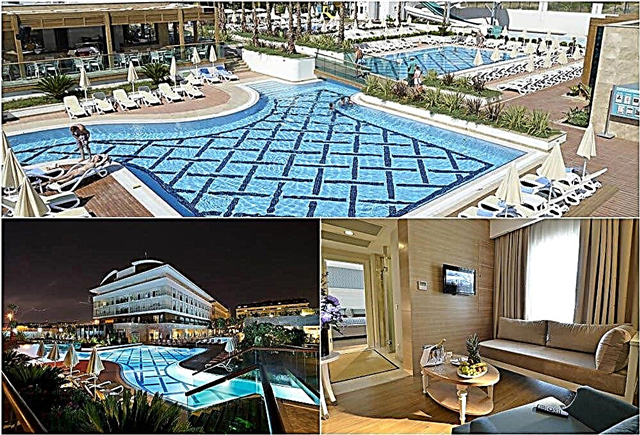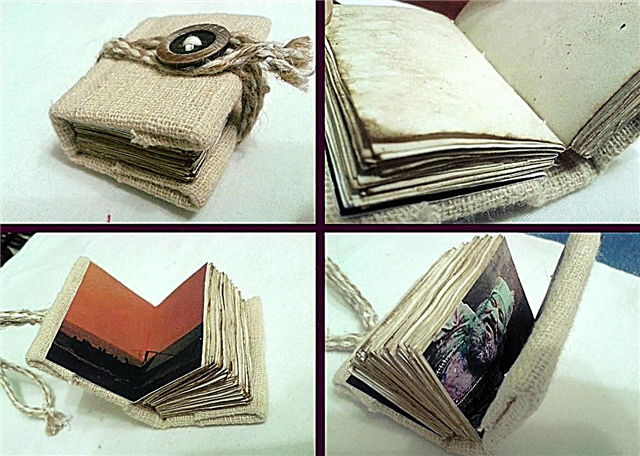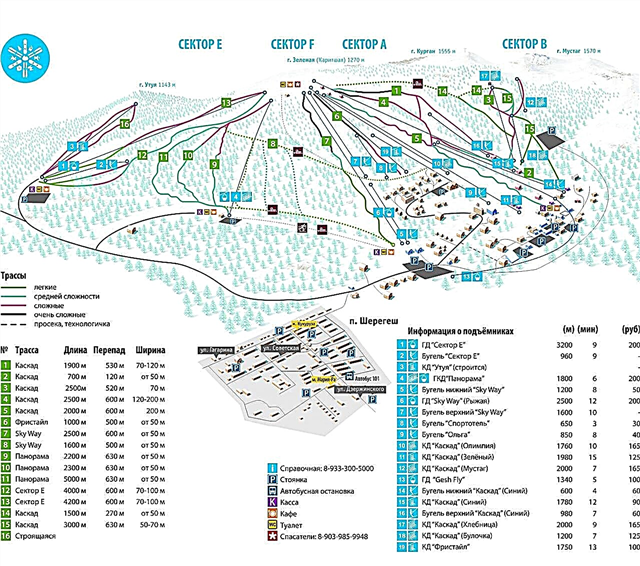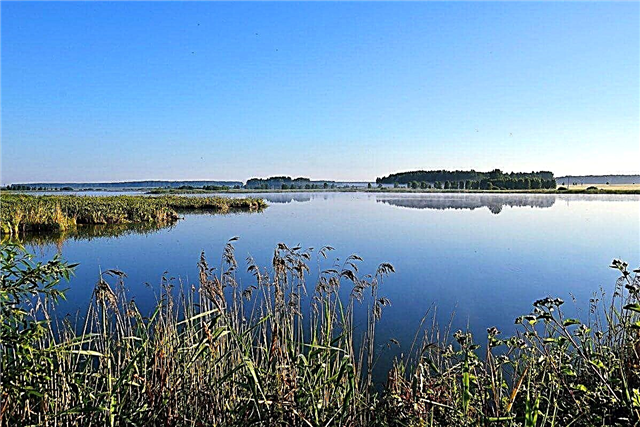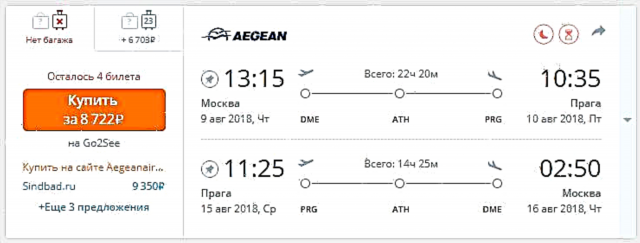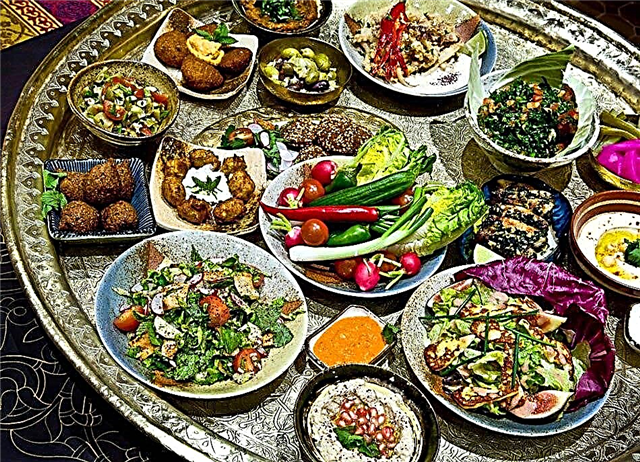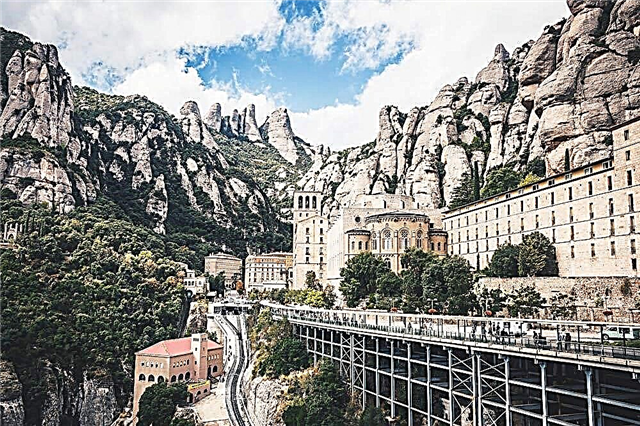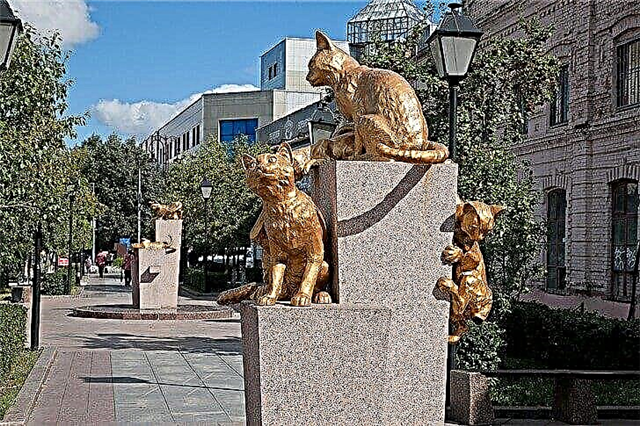The first Russian settlement on the site of modern Tyumen was founded in the 16th century. The city soon expanded and became an important fortress in the east of the Russian state. Tyumen played an important role in the development of the Far East, and the most dynamic development of the city fell on the Soviet period of the XX century. The rich history of the city and the mixing of Western and Eastern culture on its territory are reflected in the Tyumen sights.
Many monuments were erected in the second half of the 20th and are dedicated to the Great Patriotic War and its heroes. In addition to historical memorials, Tyumen has many decorative sculptures. Most of them have been recently installed. They fit perfectly into cityscapes and are quickly becoming popular attractions among both city dwellers and tourists.
Historical and modern monuments of Tyumen
List of the most famous monuments and sculptures in the city.
WWII Victory Memorial
In the center of Tyumen, on Memory Square, there is a monument dedicated to the victory in the Great Patriotic War. It was installed in 2005 and quickly became a popular attraction among the townspeople and tourists. The memorial is made in the shape of a candle and rises above the square by 29 meters. The monument symbolizes the grief of the fallen soldiers who gave their lives in the fight against the German invaders.

"Eternal flame"
The memorial complex was opened in 1968 on the Historical Square. Next to the Eternal Flame there is a bas-relief depicting Soviet soldiers participating in the main events of the Great Patriotic War. In the central part of the square there is a monument 28 meters high. Nearby there is a memorial plate on which the names of the Heroes of the Soviet Union and full holders of the Order of Glory, who were born in Tyumen, are engraved.

Siberian Cats Square
The monument was erected in 2008. In the center of a small alley, on a stone pedestal, there are golden figures of cats playing with each other. After the blockade of Leningrad was lifted, a huge number of rodents appeared in the city, and there were practically no cats left. To combat rodents, thousands of cats were sent from Siberia to the city on the Neva, including from Tyumen. The monument is dedicated to this, a memorial plaque, which speaks of the salvation of the Hermitage by Siberian cats.

Sculptures on the embankment of the Tura river
The Tura River flows through Tyumen. Its four-level embankment has become one of the symbols of the city. There are many sculptures and fountains installed on it, popular among the townspeople and tourists. Many of the bas-reliefs depict the most important stages in the history of Tyumen. And the bronze figures, installed on high pedestals, are dedicated to the development of Siberia and the Far East, as well as the development of shipbuilding in the city.

Monument to the Decembrists
In the first half of the 19th century, 9 participants in the Decembrist uprising were exiled to the Tyumen region. They lived in Yalutorsk, near Tyumen. In the center of the memorial complex there is a sculpture of a hand holding a sword and escaping from the ground. Around it there are 9 metal busts of the Decembrists who lived in the Tyumen region with commemorative inscriptions.

Monument to G.E. Rasputin
Grigory Rasputin was born near Tyumen, and in 1914 he was treated in a Tyumen hospital after being wounded. In 2014, a monument was erected in his honor on the territory of the Pharmaceutical Garden. The height of the bronze sculpture together with a small pedestal is 1.9 meters. The monument depicts Rasputin in traditional dress, standing next to a Viennese chair.

"Three clowns"
Figures of famous artists Yuri Nikulin, Oleg Popov and Mikhail Rumyantsev were installed on the Circus Square of Tyumen in 2004. One of them acts out a scene, the other looks at the artist with his dog, and the third is watching from the side, leaning on a chair. All figures are full-length. Initially, the monument was made in Yekaterinburg, but later it was decided to transport it to Tyumen.

"Mum"
The opening of the monument took place on June 1, 2010, on the 60th anniversary of the International Children's Day. On a stone pedestal with the signature “Mama” there is a figure of a pregnant woman surrounded by children: two boys and a girl. The monument was erected with private funds; the large parents of Tyumen spoke at its opening. At the bottom of the pedestal is a plaque with the names of the sponsors of the building.

"Fatherhood is a gift"
Like the monument to my mother, the sculpture dedicated to fatherhood was erected in honor of the 60th anniversary of the International Children's Day. On a stone pedestal stands the figure of a man with children, stylized in bronze. A girl is sitting on his shoulder, and next to him is a boy, whose father put his hand on his shoulder. The monument was made with private funds with the assistance of the Tyumen administration.

Monument to V.I.Lenin
The largest sculpture of Vladimir Lenin in Russia, 9 meters high, is installed on the Central Square of Tyumen. The total height of the monument together with the stone pedestal is 15.5 meters. The monument was erected in 1979. Lenin's head is proudly raised, and his coat is flung open in the wind. Large flower beds are laid out in front of the pedestal, and trees are planted nearby.

Monument to A. Tekutyev
The monument was erected in 2008. During his lifetime, Andrei Tekutyev was one of the richest people in Tyumen and the Tyumen province. He became famous among the people thanks to his generous charity. With his help, many city institutions were opened. The bronze sculpture depicts an entrepreneur sitting calmly and confidently in his chair. On the sides there are lanterns made in the 19th century style.

Monument to Yu. G. Ervier
Yuri Ervier is one of the people who gave impetus to the development of the Tyumen economy. Under his leadership, geological exploration of the Tyumen region was carried out in the middle of the 20th century. In the course of it, large deposits of oil were discovered, and later their development began. The monument depicts the geologist Ervier next to a large boulder symbolizing the bowels of Tyumen. The pedestal is made of black granite, representing oil.

Monument to a homeless dog
The bronze sculpture depicts a stray dog, no more than half a meter high. Next to it is a slotted bowl. The townspeople can throw coins there, which go to the maintenance of the city nursery for homeless animals. For the first year, almost half a million rubles were collected with the help of the monument. The inscription next to the dog reads: "Love a homeless, homeless, lonely dog."

"Parting"
The monument was erected at the initiative of graduates of the 40s of the last century. After the sudden start of the Great Patriotic War, many students of Tyumen schools voluntarily went to the front. 112 of them died on the battlefields and did not return home. The monument is dedicated to them. The sculpture depicts a girl hugging a young man and escorting him to the front. Flowers and wreaths are laid at the monument every year.

Monument to Home Front Workers
The memorial was erected in 2010, in the Olympic Square. The bronze sculpture depicts people lifting a massive slab over their heads. Among them are engineers, wounded soldiers and women workers. The monument is dedicated to the labor deeds of Soviet citizens who worked in the rear during the Great Patriotic War. Next to it there is a fountain and gazebos for relaxation.

Monument to the fighters of the revolution
In 1918, a fraternal burial of Red Army soldiers who died in battles with the White Guards was organized in Tyumen. In 1957, a plaster monument was erected on the site of a common grave. The sculpture depicts a peasant and a worker. Both are armed and stand under the banner of the Red Army.And in 1967, on the 50th anniversary of the October Revolution, a copy was cast from cast iron and installed on the site of the old memorial.

Monument to road builders
The plasticite monument was erected in 2016. The sculpture depicts a worker and an engineer. The first has a level in his hands, and the second holds a pen, from under which the road goes into the distance. The monument is dedicated to road construction workers. They made a significant contribution to the development of the region, connecting even the most remote settlements of the Tyumen region with a network of roads.

Monument to the Janitor
The sculpture depicts a janitor of the early 20th century. On his head is a cap, and in his hands he holds a broom and a sign. The inscription on it reads: "A clean city is a common task." The sculpture is made of iron, brass and copper. In the first half of the 20th century, many janitors worked throughout Russia. Their duties included not only clearing the streets, but also various assistance to the townspeople. It is to this historical period that the monument is dedicated.

"Founding of Tyumen"
The memorial stone was installed in 1996 and restored in 2002. The historical square on which the monument is located is the place where Tyumen was founded in 1586. The memorial is dedicated to this event. A depression is carved into the marble stone, and there is a memorial plaque in it with the inscription: "On this place on July 29, 1586, the city of Tyumen was founded."

Monument to the Traffic Inspector
The city hero and one of the first traffic police inspectors in Tyumen, Grigory Istomin, became the prototype for the modern monument. After returning from the front, Grigory became a traffic police officer. He soon became famous throughout Tyumen for his honesty and wisdom. The monument was erected in 2012, next to the traffic police department in the Tyumen region and depicts a traffic policeman in a uniform saluting.

Monument to Metropolitan Philofey Leshchinsky
2007 marked the 280th anniversary of the death of Metropolitan Filofei Leshchinsky. It was on this anniversary that a monument was erected as a tribute to the memory. During his lifetime, Metropolitan Philotheus was engaged in educational activities and contributed to the development of Siberia by the Russian people. The monument is a sculptural composition. A bronze figure of the Metropolitan is installed on the dais, and next to him are the indigenous inhabitants of Siberia and the Cossack.

Monument to B. Shcherbina
From 1961 to 1973, Boris Shcherbina served as the first secretary of the regional committee of the CPSU. He made a significant contribution to the development of the economy of Tyumen and the Tyumen region. The monument was erected in the Nemtsov square in 2004. A bust of a party leader rises on a pedestal made of red granite. In the upper part of the pedestal there is a commemorative inscription, and a flower garden is laid out around the memorial.

Monument to the paratroopers
The memorial was opened on the Day of the Airborne Forces, August 2, 2009, at the initiative of the "Union of paratroopers" of Tyumen. A stone stele is installed in the center. The bronze bas-relief on it depicts a soldier of the airborne troops with a submachine gun in his hands. An inscription is engraved next to it: “Strength and honor”. Near the stele, at the edges of the pedestal, there are stone globes with images of the continents. One is made of white and the other is made of black stone.

"Rainbow tree"
A tree, about 4 meters high, decorated with multi-colored leaves in the shape of a heart, is located on the Revolution Fighters Square. It is a symbol of well-being in family life and was originally supposed to be installed next to the registry office. The tree is surrounded by a stone arch with images of doves and wedding rings. The composition is very popular among newlyweds.

Monument to railway workers of the front and rear
The material for the monument was the railroad rails used during the Great Patriotic War. On the one hand, there are rails from peaceful regions in which there was no hostilities, and on the other, from those areas where major battles took place. The monument is made in the form of an arch, inside which a bell is suspended. On both sides, the memorial is decorated with bronze bas-reliefs depicting participants in the war.

"Postman"
The monument, made of carbon fiber and stylized in bronze, was installed in 2013, next to the building of the Tyumen Main Post Office. The sculpture depicts a woman, a postal worker. She leans on a mailbox with one hand, holds an envelope with a letter in the other, and a bag slung over her shoulder. The mailbox is open to everyone, so everyone can put a letter there.

Monument to the Zemsky Doctor
In the 19th century, thousands of zemstvo doctors worked throughout Russia. They were entrusted with a huge responsibility, because for each doctor there were several thousand patients with various diseases. It was the zemstvo doctors who laid the foundation for the modern healthcare system. The monument erected by the Tyumen Medical Academy is dedicated to them. On a stone pedestal stands the figure of a doctor in a coat. The total height of the monument is 2.5 meters.

"The globe"
The monument is dedicated to the oil industry of Tyumen. A multicolored globe, more than 2.5 meters in diameter, is held by the stone hands of an oilman. They symbolize the importance of "black gold" in the modern world. On the globe, in the place of Tyumen, a red oil rig is installed, which stands out against the background of all other cities and states.

"Stork of Hope"
The Tyumen Country Garden is a popular place for photo shoots for newlyweds. In 2016, a sculpture was installed here, which attracts even more young couples to the park. "Stork of Hope" is made of metal and created with voluntary donations from Tyumen residents. The sculpture depicts a stork carrying a bundle with a baby in its beak and flying through the heart.

"Melody"
The monument was erected in 2004 on the Arts Square. Its other name is "The Flutist". The sculpture depicts an ancient Greek muse playing the flute. The figure of the muse is installed on a hemispherical pedestal made of glass-polymer composite material and symbolizes the beauty and sophistication of musical art. The total height of the monument is over 3 meters.


